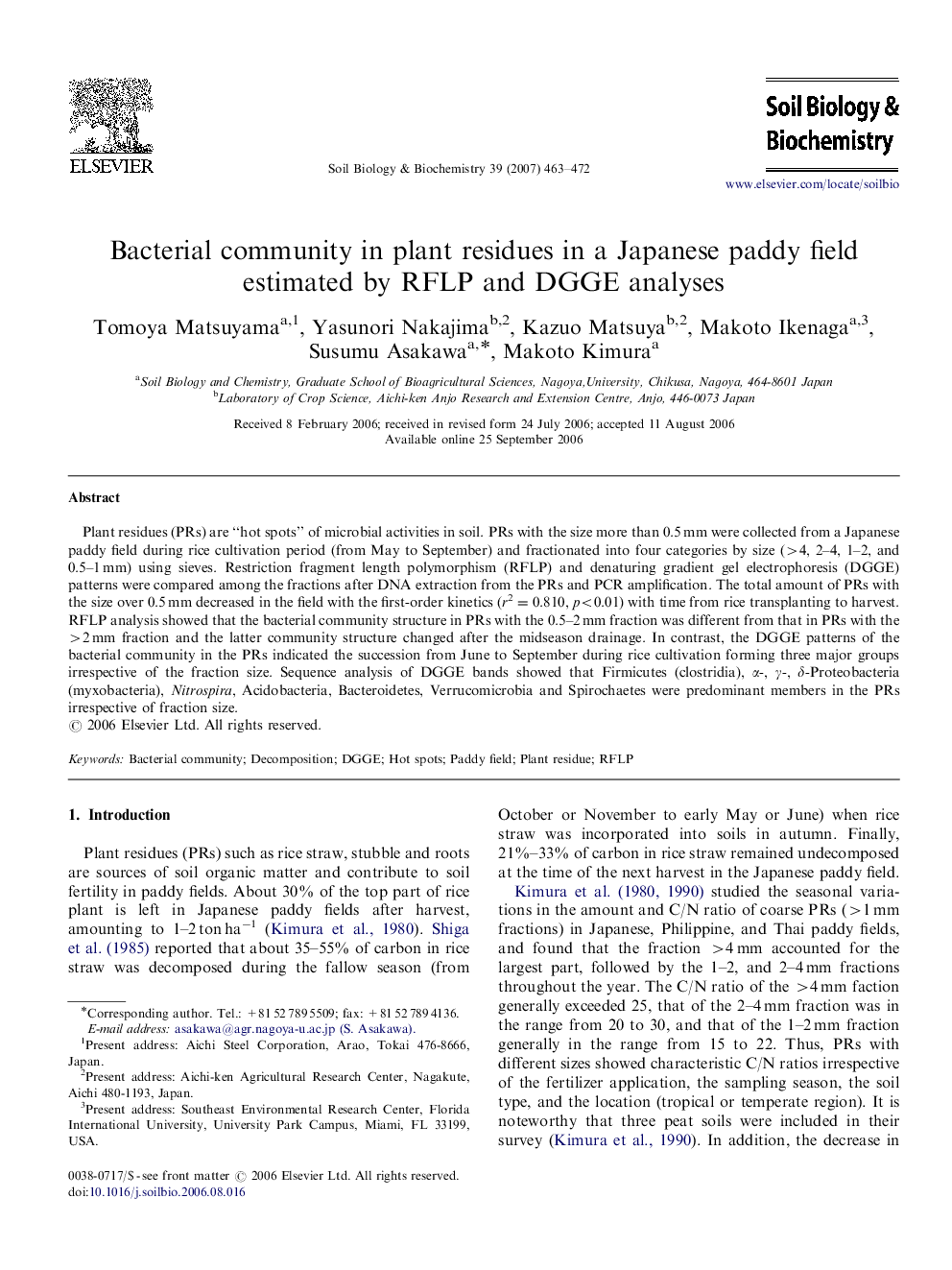| Article ID | Journal | Published Year | Pages | File Type |
|---|---|---|---|---|
| 2026466 | Soil Biology and Biochemistry | 2007 | 10 Pages |
Abstract
Plant residues (PRs) are “hot spots” of microbial activities in soil. PRs with the size more than 0.5 mm were collected from a Japanese paddy field during rice cultivation period (from May to September) and fractionated into four categories by size (>4, 2-4, 1-2, and 0.5-1 mm) using sieves. Restriction fragment length polymorphism (RFLP) and denaturing gradient gel electrophoresis (DGGE) patterns were compared among the fractions after DNA extraction from the PRs and PCR amplification. The total amount of PRs with the size over 0.5 mm decreased in the field with the first-order kinetics (r2=0.810, p<0.01) with time from rice transplanting to harvest. RFLP analysis showed that the bacterial community structure in PRs with the 0.5-2 mm fraction was different from that in PRs with the >2 mm fraction and the latter community structure changed after the midseason drainage. In contrast, the DGGE patterns of the bacterial community in the PRs indicated the succession from June to September during rice cultivation forming three major groups irrespective of the fraction size. Sequence analysis of DGGE bands showed that Firmicutes (clostridia), α-, γ-, δ-Proteobacteria (myxobacteria), Nitrospira, Acidobacteria, Bacteroidetes, Verrucomicrobia and Spirochaetes were predominant members in the PRs irrespective of fraction size.
Related Topics
Life Sciences
Agricultural and Biological Sciences
Soil Science
Authors
Tomoya Matsuyama, Yasunori Nakajima, Kazuo Matsuya, Makoto Ikenaga, Susumu Asakawa, Makoto Kimura,
